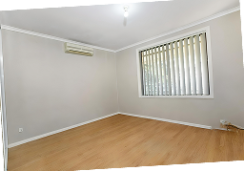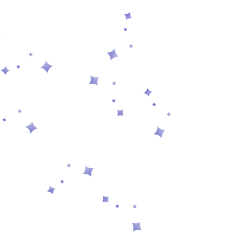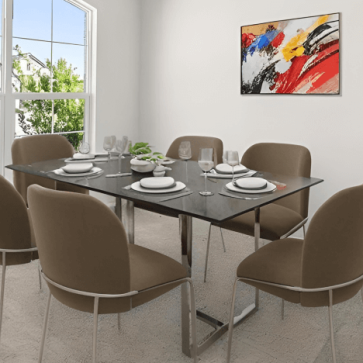Eight years ago, agents regularly applied staging to all listings; over one-third followed this approach as standard procedure. Today, only 21% of agents stage all their listings, a dramatic 17% decline.
Eight years ago, over one-third of agents staged all their listings as a standard practice. Today, that figure has dropped to only 21%, reflecting a dramatic 17% decline in staging usage across the industry.
The Shift Toward Virtual Staging: What NAR Data Reveals

- Only 21% of agents stage all listings (down from 37% in 2017).
- Median staging costs rose from $400 to $1,500 (2019–2025).
- Just 17% of agents saw 1–5% price gains from staging (down from 31%).
According to the NAR report, buyer preferences have moved increasingly toward digital channels. Notably, virtual staging has emerged as a consideration in recent years, absent from NAR reports before 2023; it now registers on 16–18% of agents’ radars as highly important.
While adoption rates remain modest compared to traditional methods, the fact that virtual staging went from non-existent in these surveys to capturing nearly one-fifth of agents’ attention in just two years suggests growing recognition of digital preparation tools.


Buyer and Seller Behavior in the Age of Virtual Staging

The movement toward virtual staging reflects a deeper change in how people buy and sell homes. NAR statistics show that 96% of buyers now begin their search online, where presentation matters more than physical presence. They expect to see polished interiors, styled rooms, and realistic furniture placement even before scheduling a viewing. As a result, listings that feature professionally staged visuals, physical or digital, command more attention and remain top of mind longer in browsing sessions.
For sellers, virtual staging has become a calculated marketing move rather than a creative experiment. It offers a way to test multiple design styles, target different buyer demographics, and relaunch stale listings at minimal cost.
Rather than spending weeks coordinating furniture rentals and photography, agents can update visuals in 1-2 days and adjust them to changing buyer feedback. In practice, this has made virtual staging not only a visual enhancement but also a flexible pricing and positioning tool, used with the same strategic intent that open houses once carried.
The Cost Landscape of Virtual Staging
The most apparent difference between virtual staging vs. real staging lies in cost. The financial logic behind virtual staging is straightforward: it delivers the visual impact of traditional staging at a fraction of the cost and in a fraction of the time.
Physical staging can easily exceed $1,500 per property once furniture rental, transportation, and labor are added. By contrast, recent data shows that virtual staging now ranges from $0.24–$75 per photo, depending on complexity, editing precision, and turnaround speed.
AI virtual staging platforms now let agents plan budgets with predictable monthly costs rather than one-off expenses. A marketing feature that was once reserved for premium listings has become an accessible standard, even for smaller agencies, because AI automation has removed most of the fixed costs tied to logistics and manual design.
How Virtual Staging Impacts Sales Performance Photo

Taking a close look at virtual staging statistics tells us how listings perform once they go live. Professionally staged photos consistently drive higher engagement on listing platforms, more clicks, and a stronger emotional response from prospective buyers.
Compared with unstaged or poorly photographed properties, a well-executed, virtually staged home can shorten days on market by weeks. According to HomeLight and NAR data, staged homes sell 5 to 11 days faster on average than unstaged listings.
Virtual Staging helps buyers see the full potential of the space, which reduces hesitation and accelerates decision-making. The compounding result is a measurable uplift in perceived property value, achieved without the heavy expense or logistical friction of physical staging.
Regional Trends and the Future of Digital Staging
Virtual staging statistics show that it has become a global practice, but its adoption varies widely by region and market maturity. Metropolitan areas such as New York, Los Angeles, and Miami, where listing photography drives competition and space is at a premium, have already embraced virtual staging.
Smaller markets are following gradually, often through brokerages testing AI-based virtual staging companies on select listings before full rollout.
Looking ahead, virtual staging is evolving beyond static images. Agents and developers are beginning to use generative AI to produce interactive room tours, day-to-dusk lighting variations, and short promotional videos that simulate walk-throughs.
As these capabilities mature, digital staging is poised to merge with broader proptech ecosystems, from MLS integrations to automated marketing pipelines, making visual staging a built-in step of listing creation rather than an add-on service.
So, for real estate agents, it’s necessary to have a resource on AI virtual staging. Though you may not be using it today, it’s more than likely that you or the ones you work with will shift to this state-of-the-art technology soon.
Virtual Staging’s New Standard
Taken together, current virtual staging statistics confirm a lasting shift. Digital staging is now central to real estate marketing. The data show a steady decline in traditional staging, rising costs for physical preparation, and growing recognition of digital alternatives that achieve the same results faster and more affordably.
As technology continues to improve, the distinction between physical, manual, and AI-driven staging will matter less than the overall quality of presentation. Buyers increasingly expect listings to be visually complete and emotionally persuasive from the first click. For agents and sellers, that expectation makes virtual staging not just a design tool but a market necessity, one that defines how modern properties are introduced, perceived, and sold.







